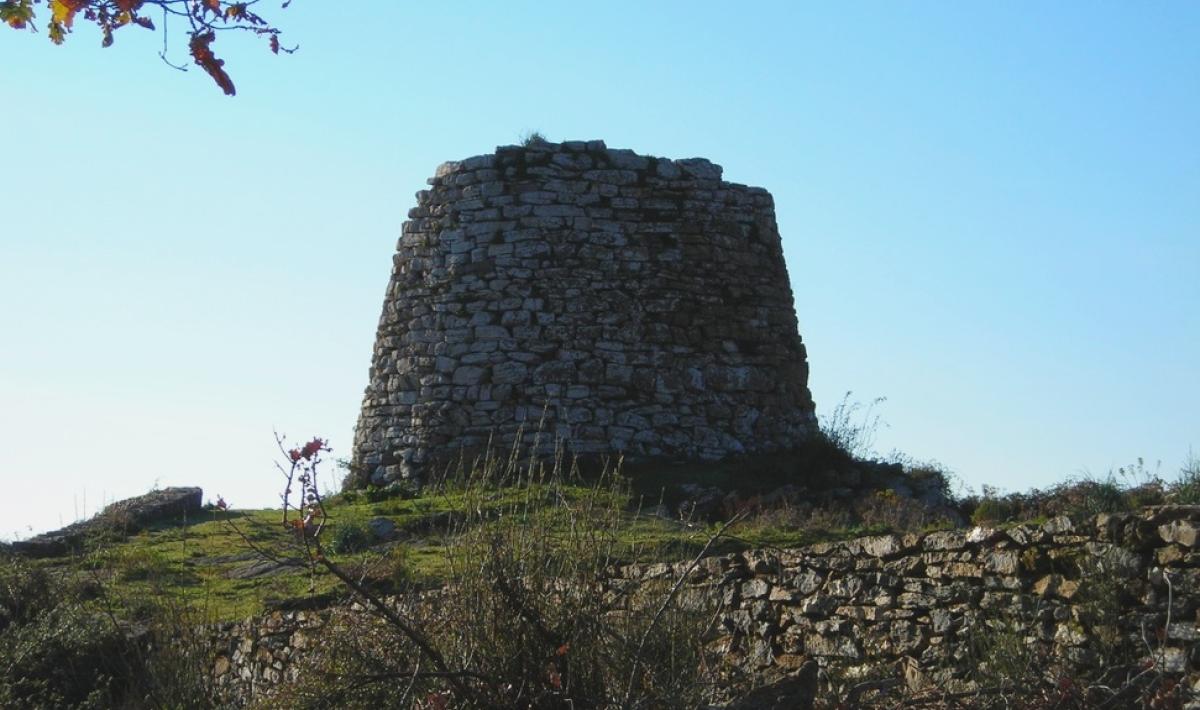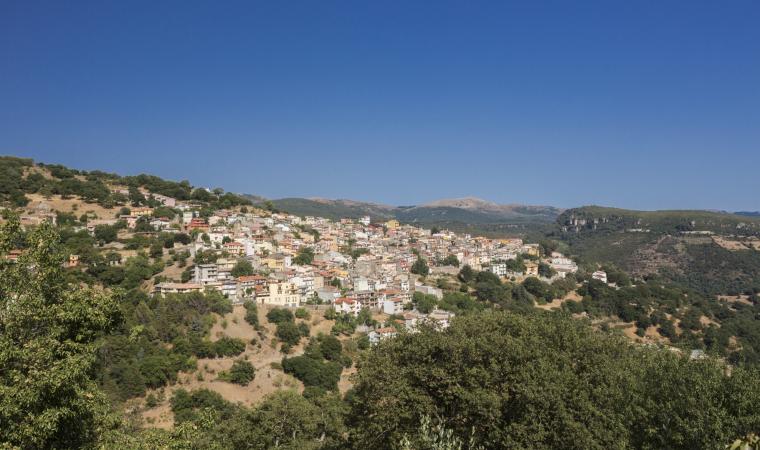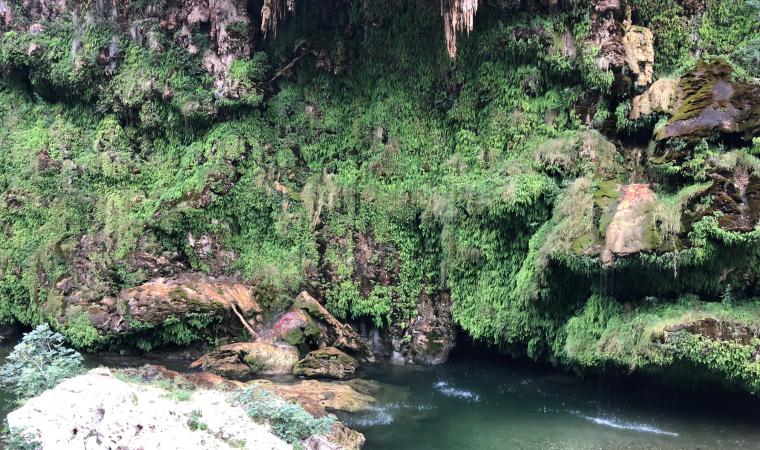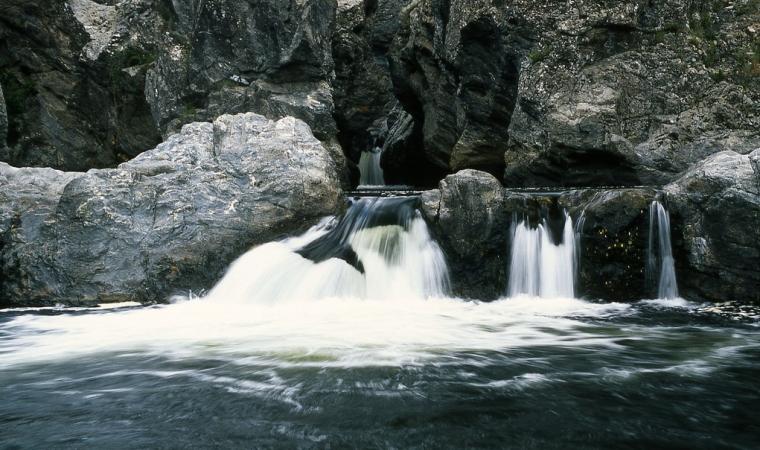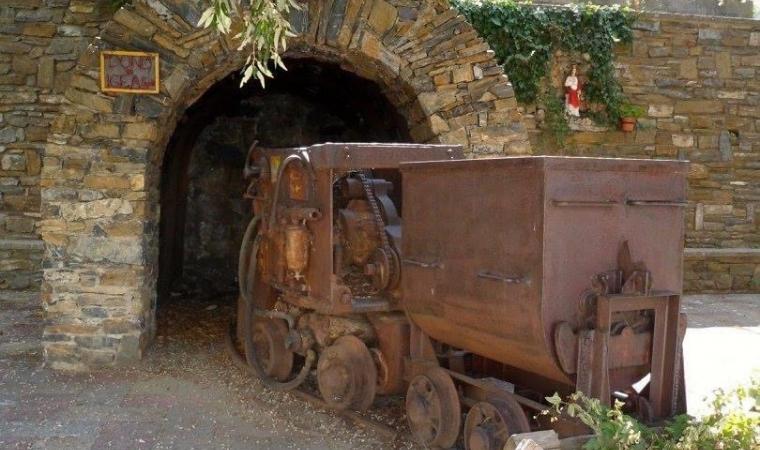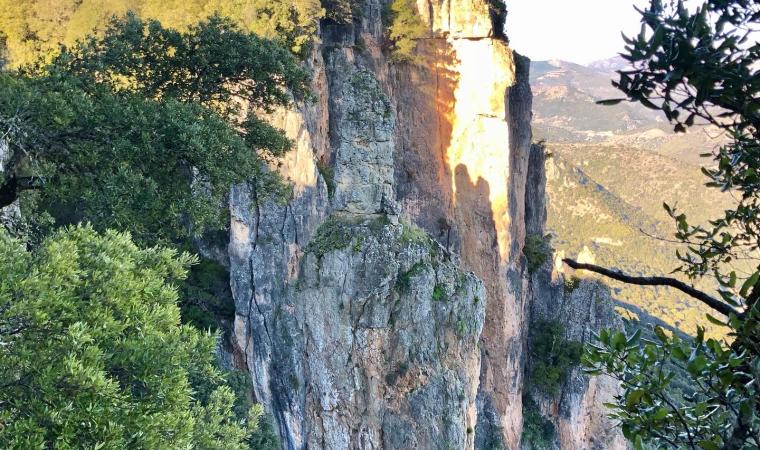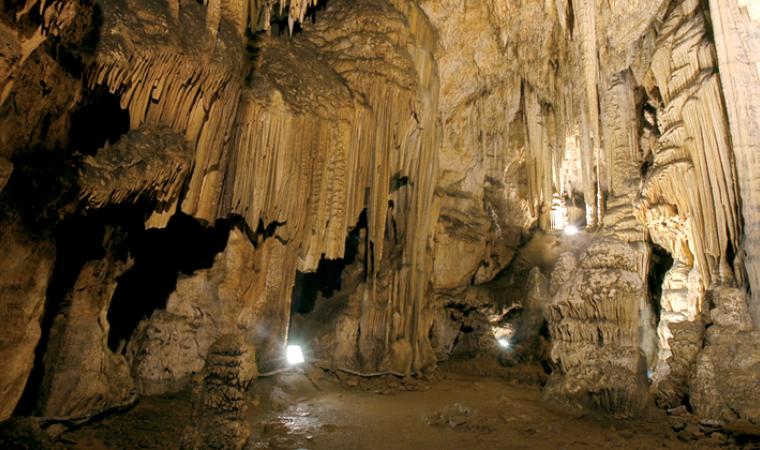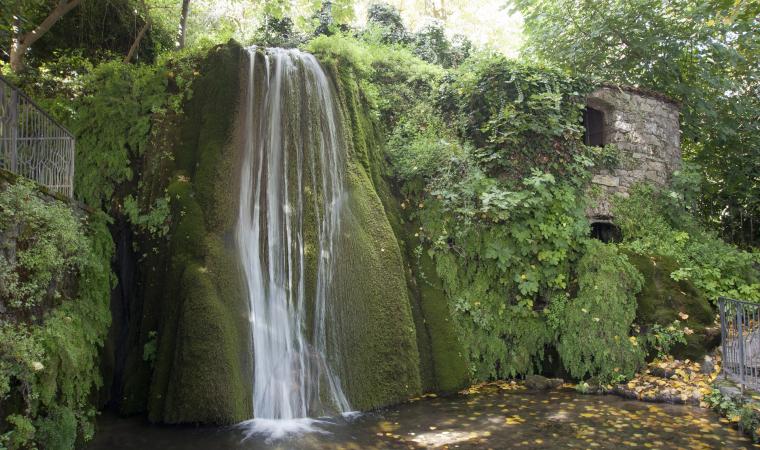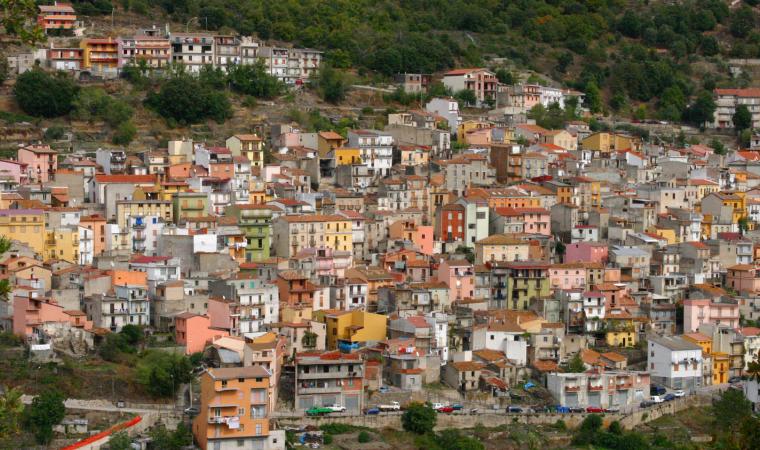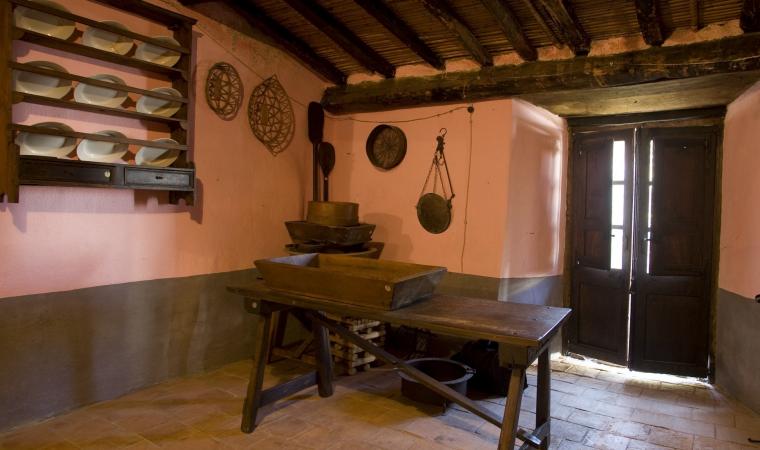It has always been surrounded by an air of legend, while its position, structure and closeness to similar fortresses suggest that it was a ‘lookout nuraghe’, part of a territorial control system. Su Nuraxi ‘e Pauli gets its name from the area in the Seulo territory in which it is located, just over two kilometres from the town. It is a single-tower nuraghe, built by the laying of uneven rows of schist blocks. It has a diameter of just over ten metres, while the tower has a residual height of around seven metres. You will be surprised by the considerable wall thickness of over two metres. From the entrance, you enter a passageway with an ogival roof. On the left, a staircase opens up and its steps lead to the top of the tower; while you will notice a niche on the right. The passageway ends in the main chamber, with a circular layout, where you will notice two other niches.
The nuraghe stands on the top of a rocky elevation, from which you can admire a captivating view over the Rio Medau, dotted with oak woods, with Mount Perdedu in the background. The other name of the nuraghe is Mannu, to distinguish it from another tower that stands two hundred metres to the south-east: this is su Nuraxeddu, ‘the small nuraghe’. The tower has partially collapsed but a few rows have been preserved and are the same in every respect to those used for su Nuraxi ‘e Pauli. Su Nuraxeddu also shares the thickness of its walls and the presence of niches in the main chamber with its ‘larger neighbour’. According to a popular legend in Seulo, the two towers are connected by an underground tunnel dug into the schist rock and impenetrable to attackers. The position of the second nuraghe is, in any case, strategic: in addition to the visual contact with the main tower, from the top of the hill on which it stands - around 700 metres above sea level - it dominates the valley of the Rio Medau more closely, beyond which it maintains visual contact with the Nuragic settlement of the nearby Taccu ‘e Ticci plateau. Here, you can see traces of a village with around thirty buildings, a Giants’ Tomb and the remains of a third nuraghe. Unlike the other two, the Taccu ‘e Ticci was probably a complex type of nuraghe, as traces of at least three secondary towers seem to be have been identified around the keep. Not far away, to the south-east, you will see the Giants’ Tomb: a rectangular body has been detected with the burial chamber inside, while the exedra is of the row type.
The Seulo territory is not only famous for its archaeological heritage, but also for its scenic treasures, linked above all to water: on the border of the Sadali territory you can admire the spectacular waterfall of su Stampu de su Turrunu: the water has carved a ponor into the rock face that has, in turn, generated a cave, from which the waterfall plunges into a crystal clear pond. Another unmissable waterfall is located on the border of Gadoni, namely sa Stiddiosa: here, the water dribbles like light rain, falling into a natural emerald green pool.

